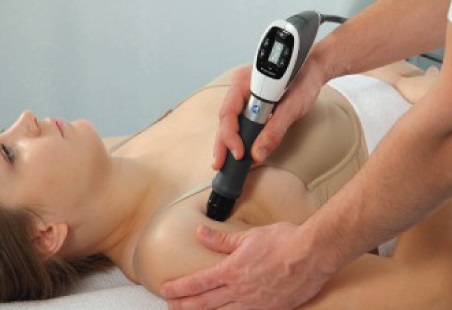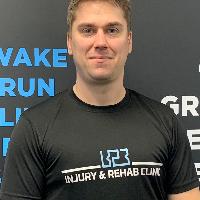Dianne first came to me in October 2019 complaining of stiffness in her shoulder, though at this point it was liveable. I diagnosed it as the beginning stages of frozen shoulder which, as those of you that have suffered with it would know, is rubbish news! There are a few giveaway signs:
- Restriction in abduction (Lateral raising)
- Restriction getting to the lower back
- A subconscious “guarding” through any movement, tightening the muscles even at rest
Dianne unfortunately displayed all of these which is what made the diagnosis easy. Now, frozen shoulder (though some argue not to use that terminology anymore) or Adhesive Capsulitis can last up to 18 months even with treatment. The best thing to do, which Dianne did, is to get assessed straight away so we can see the severity and stage of the injury.
There are 3 stages: Freezing, Frozen and Thawing stage. Once you hit that frozen stage there’s very little that can be helped in the way of pain relief or movement facilitation, that’s why its so important to get in and begin a type of treatment programme ASAP. During the freezing stage there’s still a lot that can be done; not necessarily a cure but a way to help manage the movement you still have through the period of suffering.
Frozen shoulder physiologically speaking is a calcification around the glenohumeral joint. It typically attacks females over 45 more commonly than any other group, however that doesn’t mean you’re immune if you are not in that category. Previous surgery, injury, or underlying health conditions relating to joints can also be the catalysts. The shoulder when affected begins to stiffen around the synovial sheath that wraps around the joint, and once it’s set, becomes very hard to manage conservatively.
After a month of conservative treatment with Dianne, we found that it was being maintained at a level but it wasn’t getting any easier. We were able to maintain her pain levels for 2-3 days but thereafter it would just go back to the same as before. Because of this, I recommended something called Shockwave Therapy (SWT); a newish type of treatment available in the private sector of therapy. Shockwave therapy is a high quality treatment offered to injuries primarily focused on tendon issues, but there is evidence supported to show help towards muscle and myofascial issues. When I’d mentioned this to Dianne, explaining the treatment has a 60-70% success rate for frozen shoulder in particular (although in the clinic I personally have seen a 100% success rate!) she was fully behind the idea of the treatment.

We began the programme of treatments, which are in sets of 3 spread over 3 weeks, in the middle of January 2020. Up to this point we had been promoting movement in the shoulder as much as possible both at home and in session. Dianne found it all very uncomfortable and even started finding getting dressed a major issue. After session one of SWT, Dianne was in a lot of pain initially. The reason for this is because the SWT works on vibration and a physiological response on the body to heal itself. In short, vibrations at a high velocity stimulate healing in an injured area, and of course when the problem is based at a bony site it can be quite unpleasant to have that type of treatment. As the weeks went on through the process, Dianne was noticing more movement and less pain almost overnight. I personally believe a big part in this was that Dianne was also coming in for her regular movement therapy sessions alongside the SWT treatments; she was visiting twice a week. By the end of the SWT programme there was such an improvement that I even had to make a recording and share on social media – Dianne was swinging her arm in huge circles! By now she was able to wash her hair, reach her lower back, hold the tops of door frames, everything that was limiting was now achievable. However, all of these movements were still apprehensively made as psychologically Dianne was still protective. This is understandable! She had suffered with the shoulder issue for 10 weeks up to this point, it almost became normality.
To date, Dianne now does not need any treatment on an injury that should have lasted another year. She is able to go back to the gym and keep herself moving without the need of intervention.
The end message of this article is this: If you are in the risk category for frozen shoulder and you feel a limitation in movement, come and get assessed. It could be a muscular issue, wear and tear in the joint, or it could be a freezing process developing. Better to be safe than sorry!



